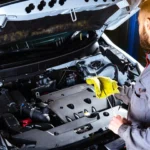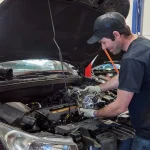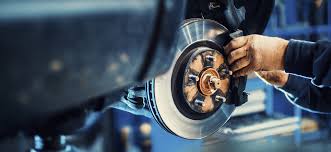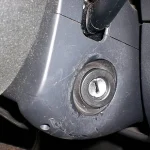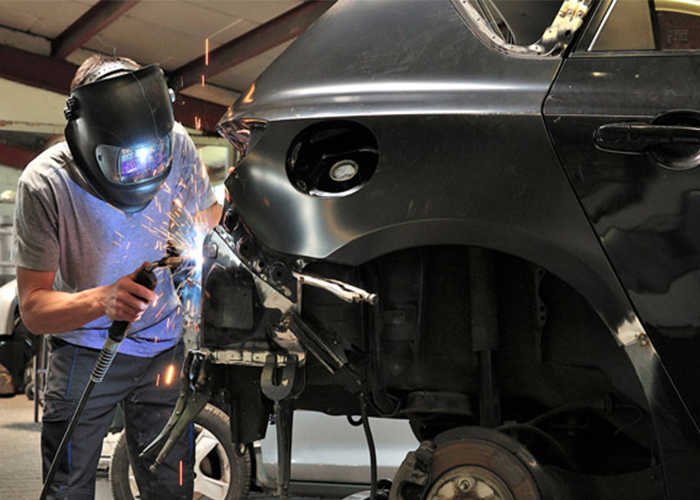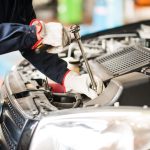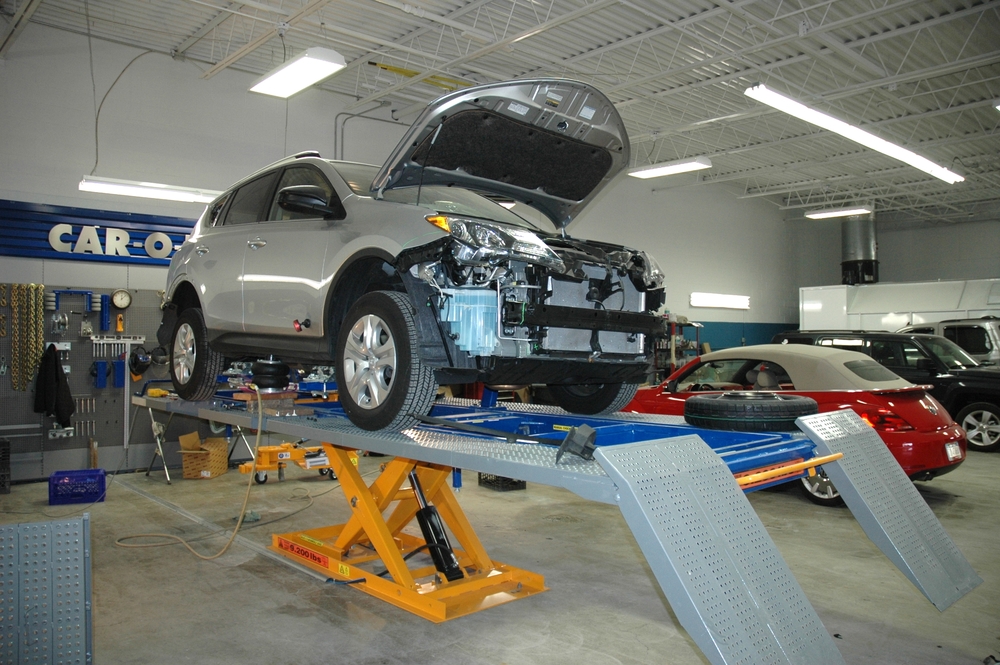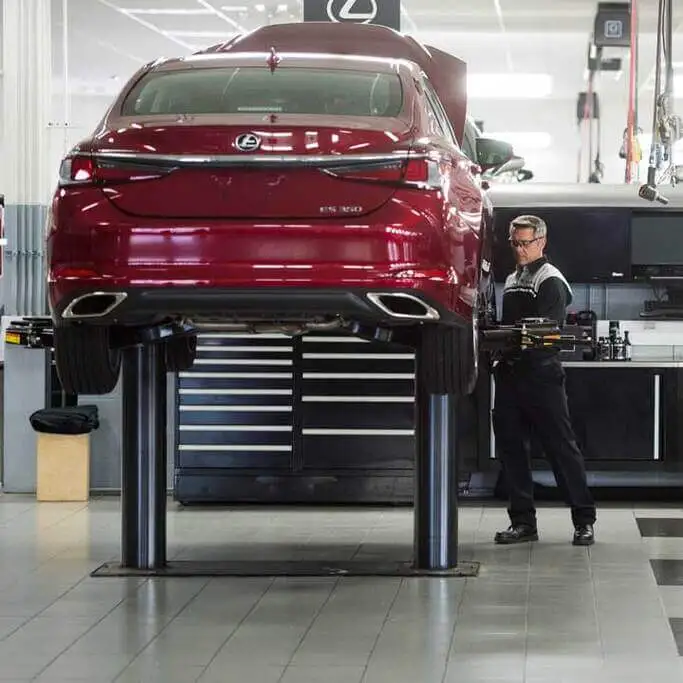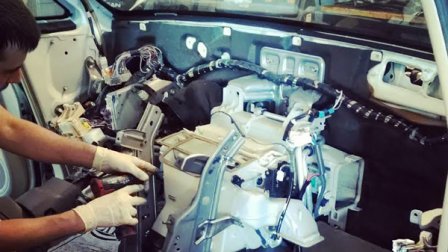Paintless Dent Repair (PDR) is a highly skilled and precise method of removing minor dents from a vehicle’s body without affecting the paint. This technique has gained popularity due to its efficiency, cost-effectiveness, and ability to preserve the vehicle’s original finish. In this article, we’ll delve into the science behind PDR, exploring how it works and why it’s an effective solution for dent repair.
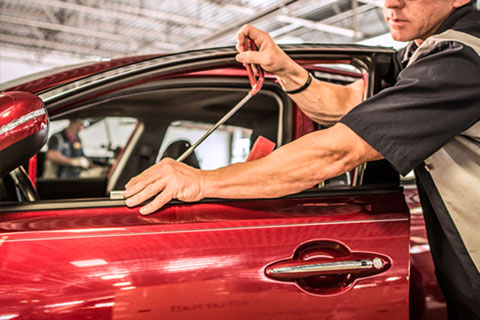
Content
Understanding the Basics of Metal Deformation
Elasticity and Plasticity: To understand how PDR works, it’s essential to grasp the concepts of elasticity and plasticity in metals. Elasticity refers to a material’s ability to return to its original shape after being deformed. When a force is applied to a vehicle’s panel, the metal can bend and flex, but within certain limits, it can return to its original shape. Plasticity, on the other hand, occurs when the force exceeds the metal’s elastic limit, causing permanent deformation. Dents typically involve a combination of both elastic and plastic deformation.
Energy Absorption: When an object, such as a hailstone or car door, impacts a vehicle, the energy from the collision is absorbed by the metal panel, causing it to deform. The energy transfer results in a dent, with the metal stretching and compressing in response to the force.
The Tools and Techniques of PDR
Specialized Tools: PDR technicians use a variety of specialized tools designed to access and manipulate the metal from behind the dent. These tools include rods and levers of different shapes and sizes, each tailored to reach specific areas of the vehicle’s body. The choice of tool depends on the location and severity of the dent.
Glue Pulling: In cases where access to the back of the panel is limited, technicians use a technique called glue pulling. This involves applying a specialized adhesive to a plastic tab, which is then attached to the dent. A pulling tool is used to gently pull the tab, lifting the dented metal back into place. Glue pulling is particularly effective for dents on double-panel areas like doors and roofs.
Lighting Systems: Proper lighting is crucial for PDR. Technicians use LED lights to cast shadows on the dent, highlighting its contours and making it easier to see the precise areas that need adjustment. This detailed visibility allows for accurate and controlled manipulation of the metal.
The PDR Process
Initial Assessment: The PDR process begins with a thorough assessment of the dent. Technicians examine the size, depth, and location of the dent to determine the best approach for repair. They also check the condition of the paint, as PDR is most effective when the paint is intact.
Tool Placement and Pressure Application: Using the chosen tools, the technician carefully accesses the back of the dented panel. By applying controlled pressure, the technician massages the metal back into its original shape. This process requires precision and skill, as too much pressure can cause the metal to overcorrect or crack the paint.
Monitoring and Adjustments: Throughout the repair process, the technician continuously monitors the dent using specialized lighting. Adjustments are made as needed to ensure a seamless repair. The goal is to restore the metal to its original contour without any visible signs of the dent.
The Benefits of PDR
Preservation of Original Paint: One of the primary advantages of PDR is that it preserves the vehicle’s original paint. Traditional repair methods often involve sanding, filling, and repainting, which can lead to color mismatches and reduced resale value. PDR maintains the factory finish, ensuring the vehicle looks as good as new.
Cost-Effectiveness: PDR is typically more cost-effective than traditional dent repair methods. Since it doesn’t require paint or fillers, material costs are lower. Additionally, the process is generally quicker, reducing labor costs.
Environmental Friendliness: PDR is an environmentally friendly repair method. It eliminates the need for chemical fillers, primers, and paints, which can release volatile organic compounds (VOCs) into the atmosphere. By avoiding these materials, PDR significantly reduces the environmental impact of dent repairs.
Efficiency: PDR offers a quicker turnaround time compared to traditional methods. Many minor dents can be repaired in just a few hours, allowing vehicle owners to get back on the road faster. This efficiency is particularly beneficial for busy individuals who need their vehicles promptly.
Limitations of PDR
Extent of Damage: While PDR is effective for many types of dents, it has limitations. Severe dents that involve significant paint damage, sharp creases, or damage to the panel’s edges may not be suitable for PDR. In such cases, traditional repair methods may be necessary.
Accessibility: The success of PDR depends on the technician’s ability to access the back of the dented panel. Some areas of the vehicle, such as those with double panels or limited access points, can be challenging to reach. Glue pulling can address some of these issues, but not all dents can be repaired with PDR.
Conclusion
Paintless Dent Repair is a highly skilled and effective method for removing minor dents and dings from vehicles without affecting the paint. By understanding the science behind PDR, including the principles of metal deformation, the specialized tools and techniques used, and the step-by-step process, vehicle owners can appreciate the precision and expertise required for successful repairs. The benefits of PDR, including cost savings, environmental friendliness, and preservation of the original paint, make it an attractive option for maintaining the appearance and value of vehicles. As technology and techniques continue to advance, PDR will likely remain a preferred choice for dent repair in the automotive industry.

Daniel is the eco-conscious auto whisperer. His blog doesn’t preach; it educates on the world of green transportation. It’s your guide to reducing your carbon footprint without sacrificing style or speed.


